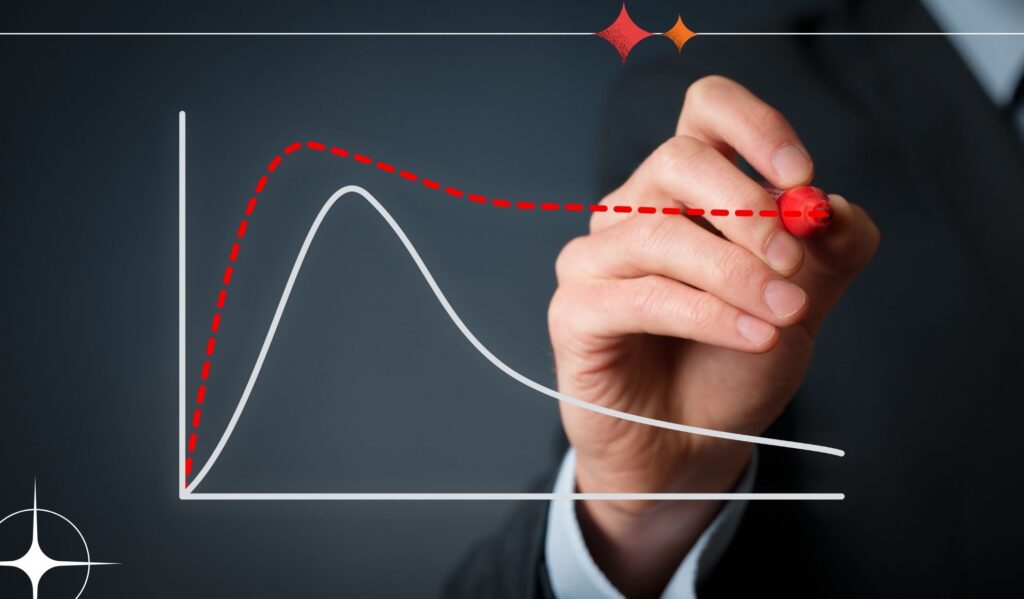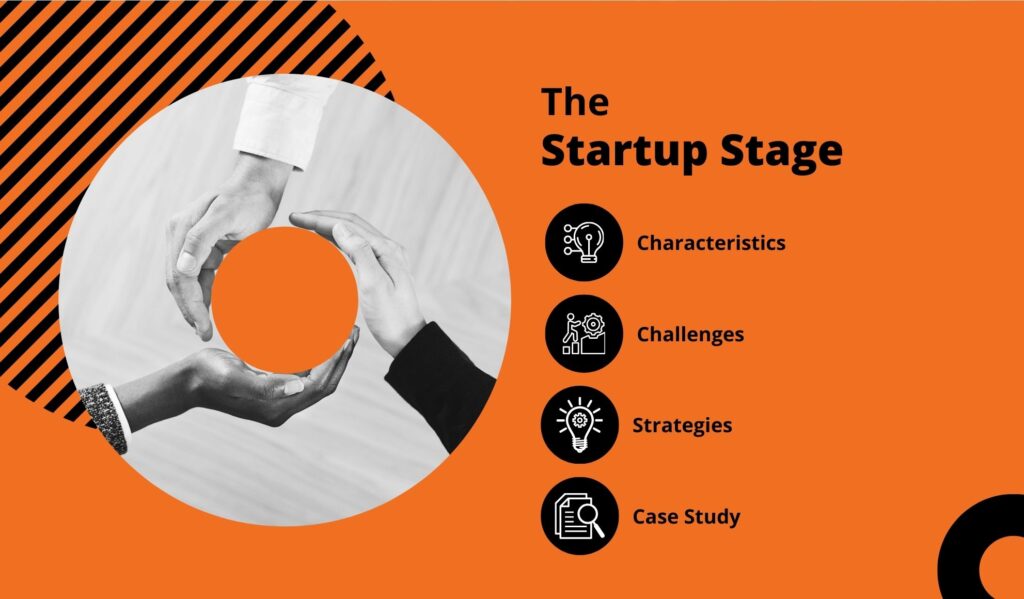Comprehensive Look into Business Life Cycle to Stay ahead of the Competition
by Ankita Tripathy Business 18 January 2025

You plant a tree, you watch it grow, and then one day, you realize that it is reaching the end of its life. It is a painful thing to see, but it is the inevitable truth of life. All things must come to an end. Every summer will end with fall. This rings true for all the things in life.
Everything has a life cycle. A start, a middle, and an end. In fact, your business also has a life cycle. This article is focused on the business life cycle. But what is a business lifecycle, and how is it important?
Do not worry, as we will help you understand this question and make you a better entrepreneur or a wealth manager. So, let’s go!
What Is A Business Life Cycle?

Imagine you are a ship’s captain, and you are sailing the seas without any form of maps, compass, or an idea of where you are headed. This is a recipe for disaster waiting to happen. An entrepreneur without a clear understanding of this cycle is similar to that. A captain without any idea of direction.
A business life cycle is basically an understanding of the different stages a business must go through from its inception to dissolution. Therefore, it is a study of a complete journey. This is an important part to understand for an entrepreneur.
You must understand where your business is standing and where it is headed. Like human beings, the business life cycle also can be divided into a few distinct stages. However, we will eventually get to that.
So, in simple terms, a business life cycle is a roadmap of the development cycle of a business. Therefore, making it an important part of the whole deal.
The Universality Of The Idea

So, how universal is this idea? Honestly, every business will have a life cycle. You could be a part of the Big five companies or merely a startup. You will have this business cycle. Therefore, it is safe to say that the business life cycle is a universal concept.
What is variable is the total duration each cycle will last. In other words, some businesses might have a short life cycle while some might stay in business for a few months. Meanwhile, some remain in business for centuries.
Therefore, this is a very important and universal concept that every entrepreneur needs to understand today. Thankfully, we are here to help you with that effort.
Why Is It Important?
The primary reason why you must have some idea about the business life cycle is because it provides a roadmap. A clear understanding of where your business stands and the efforts that you need to put in.
Subsequently, it also helps investors understand the overall longevity of an investment. So that they have plans for re-investment and formulating exit strategies. Therefore, the primary job of a business life cycle plan is to keep tabs on the longevity of a business.
Stages Of A Business Life Cycle
With the basics out of the way, we are ready to dive deep into the different stages of the business life cycle. In the section and following subsections, we will be looking at three distinct stages of a business life cycle and the subsequent actions that an entrepreneur needs to undertake. Here we go!
The Startup Stage

The first stage of the process is called the startup stage. This comes at the very beginning of a business stage. Therefore, it is a crucial part of the process.
Characteristics
In the startup stage, you are simply a new kid on the block. A small fry in a sea of sharks. This stage is characterized by high zeal but low cash flow. Business experts claim that this is the most volatile stage.
As a result, each and every step counts. One small move and all your dreams can come crashing down. Therefore, be careful about the things that you need to do and do them accordingly.
Challenges
Every stage comes with its own challenges. Here are some of the prominent challenges that you will have to face in the startup stage:
- Cash Flow: Since you start the cash flow will be limited. You will have to be judicious with your money at all times.
- Market Validation: As a new business, your market presence would be negligible. In other words, no company would know you, and you have to earn your keep by the skin of your teeth.
- Resource Allocation: limited resources pose a problem of resource allocation. In other words, you will always be spread too thin, and you might have to pitch in to do some tasks.
Strategies
As an entrepreneur, your primary job is to deal with challenges, and the best way to proceed is to strategize:
- Planning: Understand the essence of business planning and master it.
- Validation: Serve your customers in a way that they offer you valid feedback and validation. The road will be long, and you will need the light of validation.
- Cost management: Keep track of every dollar, rupee, pound, etc., you spend. This is to create a record and expense trail.
- Unreal promises: Do not get carried away and start promising unrealistic things to your customers.
Case Study
A business called ‘QuickFry’ promised its customer base that it aims to deliver fast food in just two minutes. The company started out well, but soon the business tanked.
Experts inferred this was due to poor resource management and not keeping track of the expenses.
As a result, customers were left waiting for food, leaving a bad taste in their mouths. Consequently, the business tanked.
So, understand where you are standing and proceed accordingly. Do not overstretch yourself in any way.
Growth Stage
The next phase is called the growth stage. This is where the graph is supposedly going to go up. Things are finally going the way you want, and you have a steady flow of cash.
Characteristics
Congratulations! You have made it past the startup stage and entered the growth stage. The growth stage is all about scalability and breaking newer horizons. It is also the time when people are starting to know your brand.
This stage is geared, but the volatility remains. In other words, entrepreneurs still need to be careful as to where theories are heading. A wrong move can halt the growth and bring the decline phase sooner.
Challenges
Challenges will exist in every stage as we have listed. However, they morph as the stages proceed. Here are the challenges you will face in this stage:
- Scalability: The constant challenge will be to meet the demand for scalability. You need to meet numbers at all costs.
- Quality Control: Not only do you have to meet the number, but you will also have to meet the parameters of excellence. Therefore, you need to put your products through rigorous quality control checks.
- Competitions: This is when you need to start scoping out your potential competitors. Always remember that some businesses are your role models, while the rest are competitors. Therefore, understand this duality.
Strategies
Whenever there are challenges, there needs to be solutions. This is true for this stage as well. Here are some of the strategies that you need to understand and implement:
Standardization: You need to ensure that your products or services are standardized. They follow a quality uniformity.
Diversification: You cannot win the race with one good product. You need to have some aces up your sleeves as well.
Talent acquisition: Getting the right people on board is another point that you need to master. Good people drive companies to greatness.
Case Study
Lego hit a roadblock in the 90s. Before that, the brand was associated with popularity. However, clones and a massive price point did not help the brand. As a result, Lego moved away from generic products.
In fact, the brand started producing licensed products like Star Wars Lego Set, etc. However, they really catapulted to success when they started the Bionicle series.
This shows that having one egg in the basket can lead you to trouble. So, diversify, and you will have enough space to grow and mature.
Decline Stage
The final stage is called the decline stage. This is the hardest part to deal with. This is when you realize that the ride is about to come to a halt.
Characteristics
The hardest part of this stage is the dying up of revenue. Low-order counts characterize this stage. Jaded product line-up and lackadaisical product response.
This stage is not the place any entrepreneur wants to be in. However, this stage is an inevitable truth, and you cannot help it.
Challenges
This is where the cycle comes to full circle. Challenges in this stage are very reminiscent of the challenges you faced in the startup stage.
Reduced cash flow: as orders dry up, so will the cash flow. In fact, reduced cash flow is one of the most significant indicators that your business is tanking.
Relevance: Another critical aspect that you will note is the reduced relevance. In fact, reduced relevance is often due to changes in times.
Employee Morale: Employee morale would be at an all-time low and people would abandon ship. Something relevant to sinking ships.
Strategies
Honestly, there is no way that you can salvage a sinking ship. However, self-preservation can help. Here are some of the things you can do to save yourself:
- Exit strategy: you must come up with an exit strategy. This would enable you to take the problem head-on and salvage something.
- Downsizing: If you can see marks of defeat, consider downsizing. Shed all the necessary weight and focus on the important things.
Case Study
Nokia is a great case study for the decline. Nokia was an industry stalwart, but it failed to make the transition to an Android module the way Samsung did. Nor did they create their own platform.
As a result, the brand tanked, and brands like Apple, Samsung, Nothing, etc took over the industry. This led to a quiet exit of the brand from the smartphone landscape.
Kodak can be another case study that you can refer to.
The Final Thought
In summation, these were some of the prominent stages of a business life cycle that you must go through. Even though the end is inevitable, you need to understand that it can be staved off using good decisions.
Therefore, if you genuinely want to be an entrepreneur, you must understand these stages of a business life cycle. Otherwise, you are a ghost ship heading nowhere. Thank you and have a great day ahead.



































































































